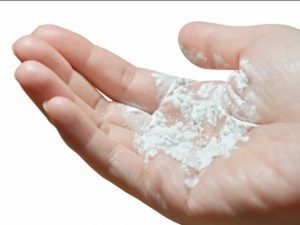Erika O'Donnell Featured in Super Lawyers Article
Erika O’Donnell was recently quoted in Super Lawyers’ article discussing the actions you must take, and when, if you or a loved one fall ill from asbestos.
By Super Lawyers staff on January 25, 2021
YOU HAVE 3 YEARS TO FILE A MESOTHELIOMA LAWSUIT IN MASSACHUSETTS
The actions you must take, and when, if you or a loved one fall ill from asbestos
COVID-19 Countermeasures: Liability Immunity Under The PREP Act
Written by: Giuliana D’Esopo
On March 17, 2020, the U.S. Department of Health and Human Services (“HHS”) published an administrative Declaration providing broad legal immunity for manufacturers, suppliers, and administrators of certain countermeasures used against COVID-191. Negligence cases regarding covered countermeasures will be barred, limiting an injured party’s possible redress to the Countermeasures Injury Compensation Program (“CICP”).
The authority to issue such declaration arises out of the Public Readiness and Emergency Preparedness Act (the “PREP Act”).2 Congress enacted the PREP Act in 2005 as a response to fears about an avian influenza (H5N1) pandemic.3 Through the issuance of such PREP Act declaration, the Secretary makes a determination that a disease, condition, or other threat to health constitutes a public health emergency and specifies, among others, the category of diseases, health conditions, or threats to health for which the Secretary recommends the administration or use of the covered countermeasure, and the period during which the liability protections are in effect.4
The PREP Act defines “covered countermeasure” by outlining three categories.5 The first consists of “qualified pandemic or epidemic products” and includes products (drugs, biological products, and devices) manufactured, used, designed, developed, modified, licensed, or procured to diagnose, mitigate, prevent, treat, or cure a pandemic or epidemic or to limit the harm such pandemic or epidemic might otherwise cause.6 The second category describes “security countermeasures,” and the final category consists of products subject to emergency use authorizations.7 The PREP Act’s liability protections are extremely broad, essentially covering most manufacture, testing, development, distribution, dispensing, administration, or use of designated covered countermeasures absent willful misconduct.
The PREP Act authorizes the Secretary to establish a program to provide compensation to individuals who have suffered serious physical injuries or death as the direct result of the administration or use of a covered countermeasure, called the Countermeasures Injury Compensation Program (“CICP”).8 Eligible requesters include injured countermeasure recipients, survivors of deceased injured countermeasure recipients who died as a direct result of the administration or use of a covered countermeasure, and executors or administrators on behalf of the estates of deceased injured countermeasure recipients (regardless of their cause of death).9 Requesters will need to prove causation pursuant to CICP’s standard: proof that is based on “compelling, reliable, valid, medical, and scientific evidence.”10 A temporal association between receipt of the countermeasure and onset of the injury is insufficient.
Requesters who successfully demonstrate causation can recover reimbursement for reasonable and necessary medical services and items to diagnose or treat a covered injury or its health complications; lost wages; and death benefit for certain survivors.11 Benefits under CICP will only be paid after the requester has in good faith attempted to obtain available coverage from all third-party payers with an obligation to pay for or provide such benefits, and the requester must provide the information of such payers.12 If a request is denied, the requester can motion the Secretary of HHS to review the determination, but there is a broad statutory prohibition against any further review.13
It is too early to predict the effectiveness of CICP as a route toward remedy for parties injured by covered countermeasures of COVID-19, but compared to traditional tort procedure, it is seemingly unfriendly to requesters. The lack of judicial oversight is cause for concern, with no further appeals available beyond internal review. While traditional tort procedure allows an injured party his day in court, decisions under the CICP are made on an administrative basis. The process for attorneys evaluating a potential case will be to determine the presence of a covered countermeasure and whether the individual or entity that administered it is shielded from tort liability under the Declaration, and to meet the Declaration’s standard for showing causation.
There is a clear need for the development and distribution of life-saving measures to combat the COVID-19 pandemic, and the Declaration helps encourage such innovation. In the pursuit of this goal, is important to consider potential risks and employ reasonable care in the production of such countermeasures.
- Declaration Under the Public Readiness and Emergency Preparedness Act for Medical Countermeasures Against COVID-19, 85 Fed. Reg. 15198 (Mar. 17, 2020).
- 42 U.S.C. § 247d-6d.
- See Pandemic Planning Update II, Department of Health and Human Services (Nov. 13 2006), available at cdc.gov/flu/pandemic-resources/pdf/panflureport3.pdf.
- See 42 U.S.C. § 247d-6d.
- See 42 U.S.C. § 247d-6d(i)(1).
- Id.
- Id.
- 42 C.F.R. § 110 (Countermeasures Injury Compensation Program).
- Id.
- See 42 C.F.R. § 110.20(c) (outlining CICP’s causation requirement).
- See 42 C.F.R. § 110.2 (summarizing available benefits).
- See id.
- See 42 C.F.R. § 110.91 (2018).
Raw Asbestos Imports Quadrupled from January–April 2018 Compared to 2017
Written by: Shepard Law Firm Staff
Washington, DC—The Asbestos Disease Awareness Organization (ADAO), an independent nonprofit dedicated to preventing asbestos exposure, released new research confirming the increase in raw asbestos imports.
The report detailed that according to the U.S. International Trade Commission, from January to April 2018, the chemical industry brought in nearly 260 tons of asbestos from Russia and Brazil. This represents an increase of nearly 400% of the January–April 2017 imports of 67 tons. The president’s administration and the Environmental Protection Agency, who have close ties to the chemical industry, have defended the ongoing imports and use of this deadly substance.
Asbestos is a known carcinogen and there is no safe or controlled use of asbestos. According to the new “Global Asbestos Disaster” paper, asbestos-related diseases account for nearly 40,000 American deaths each year. This year alone, asbestos has been found in children’s makeup, in schools in Pennsylvania, and in a prison hospital in Georgia.
We believe that asbestos use should be eliminated to protect the public and this trend of increasing the importation of asbestos may possibly expose more individuals to health risks. If you or a close family member have developed mesothelioma or other asbestos-related illnesses, please do not hesitate to contact us for a free consultation.
New Developments in Product Liability Law: Talc and Ovarian Cancer
Written by: Shepard Law Firm Staff
Talcum powder and baby powder are well-known products that the average consumer would have little concern with using on a regular basis. However, new information has recently arisen that links the regular use of talcum powder to ovarian cancer in women.
Manufacturers of talcum powder products and companies that mined and supplied talc have previously faced lawsuits over allegations that the mines from which their talc originated was also contaminated with asbestos. When regular users of these talc products (or workers in factories and mines who were regularly exposed to talc) developed lung cancer or mesothelioma, the cause of the disease was the asbestos contamination, not the talc itself.
In the most recent wave of cases against manufacturers of talcum powder products such as Johnson & Johnson, the allegation is that the talc itself is the carcinogen. Over the past year, a number of women have filed lawsuits against Johnson & Johnson, claiming that they have developed ovarian cancer as a result of their regular use of Johnson & Johnson’s baby powder. These cases allege that Johnson & Johnson knew that its Baby Powder and Shower to Shower Powder talc products cause ovarian cancer, and failed to warn women who used these products of the potential dangers.
While litigation against asbestos product manufacturers on behalf of individuals with mesothelioma or lung cancer has been going on for decades, litigation involving talc and ovarian cancer is a very recent development. When a large number of cases are filed based on a new legal theory, courts will often conduct what are known as bellwether trials to test the merits of the plaintiff’s claims and create a range of likely jury verdicts. As the medical link between talc exposure and ovarian cancer is not nearly as well-documented as the link between asbestos exposure and mesothelioma, these bellwether trials will be very important for existing as well as future claims made by women who develop ovarian cancer as a result of exposure to talc products. Judges that oversee groups of cases can conduct these bellwether trials in a variety of manners.

At least two juries have found Johnson & Johnson liable and returned 8-figure verdicts in early bellwether trials.
- In February 2016, a Missouri jury awarded $72 million to the family of a woman who died from ovarian cancer after using Johnson & Johnson talc products for more than three decades. This verdict included $62 million in punitive damages, meant to punish Johnson & Johnson for the jury’s findings that the company knew about the cancer risks from its products for decades but failed to provide warnings to its customers or to the medical community.
- In May 2016, another Missouri jury awarded $55 million in damages (including $50 million in punitive damages) to a woman who developed ovarian cancer after using Johnson & Johnson’s talc products for nearly 40 years. After undergoing a hysterectomy, talc was found in the plaintiff’s ovarian tissue. Once again, the jury found that Johnson & Johnson knew that its products caused ovarian cancer, and failed to warn users of the danger.
While the ovarian cancer litigation against Johnson & Johnson and other manufacturers of talc products is still in its early stages, these recent cases show that the medical link between use of talc products and the development of ovarian cancer is strong enough to result in favorable plaintiff’s verdicts. If you or a close family member have developed ovarian cancer and are a regular user of these products, please do not hesitate to contact us for a free consultation.
The Deposition in an Asbestos Case: What is it and why it’s important
Written by: Michael McCann
For most people, a deposition is unfamiliar territory. And even for those who have experienced a deposition in another setting, a deposition in an asbestos case can be a completely different experience.
What is a deposition?
A deposition does not take place in court; the deposition usually takes place in a conference room but it is sworn testimony. During the deposition, the witness will be asked questions by an attorney, usually an attorney who represents the opposing party or parties. The witness will provide answers to those questions under oath. A court reporter will be present and takes down all of the questions and answers, creating a transcript of the deposition, so that it can be referred to at a later date. At Shepard Law, we try to find a location that is most convenient to you, which is usually at a nearby hotel or conference center.
If I’ve been diagnosed with mesothelioma will I need to give a deposition?
Typically, in an asbestos case, the injured person is the most important witness, because he or she is usually in the best position to provide testimony about the asbestos-containing products that he or she worked with during their career. Since the testimony of the injured person is a central part of an asbestos case, a deposition of the injured person is usually taken if he or she is available to testify. Having said that, I must note that our clients’ health is of utmost importance to us. These depositions proceed based on the health of the deponent. If, in the middle of the deposition, you begin to feel too tired or sick to continue, we will immediately stop the deposition and have it continue on another day, when you are feeling better. We will make sure that your deposition is completed in the most convenient and efficient way possible.
Why is a deposition important?
Depositions are very important in civil cases in Massachusetts. Since a large majority of civil cases settle out of court before reaching trial, deposition testimony that identifies the asbestos-containing products that the injured person worked with is vital, because this is the evidence the parties will use when discussing settlement. Before trial, it’s typical that the only testimony in the evidence record will be deposition testimony, which makes it that much more important to the strength of the case. Since the burden of proof in a civil case is on the Plaintiff, we must present enough evidence to show that a particular product or products caused the injury that the Plaintiff has suffered. Deposition testimony is a key component of putting together a strong case.

What makes a deposition in an asbestos case unique?
Depositions in asbestos cases are different than other types of cases, because asbestos cases usually have multiple defendants. Therefore, there will typically be multiple attorneys that will cross-examine the witness at an asbestos deposition. These attorneys represent the various defendant companies that have been sued in the case, and each attorney will focus their questioning on the particular products that their client companies manufactured or sold. Each attorney will take turns asking questions, and one of our attorneys will be by your side during the entire deposition.
A deposition can certainly seem like an intimidating experience, but this is where our firm’s experience and expertise in these matters come in handy. Our attorneys have represented asbestos victims at countless depositions over the years. We understand how the process works, and will be at your side to protect your rights and your interests during the entire deposition.
If you or a loved one has been diagnosed with an asbestos-related illness like mesothelioma or lung cancer, and would like to know more about your rights, please call us for a free, confidential consultation at (617) 451-9191.
Celebrating National Men’s Health Week
Written by: Erika O’Donnell
This week (June 13 – June 19) was National Men’s Health Week. While mesothelioma affects both women and men, it is a topic that should certainly be a part of any discussion regarding men’s health. Men who have served onboard Naval ships or who have worked in industries that utilized raw asbestos and/or asbestos-containing products such as insulation, gaskets, packing and board, are at risk for contracting an asbestos-related disease.
Diseases Caused by Asbestos Exposure:
Mesothelioma:
- Mesothelioma is a rare form of cancer, typically caused by asbestos exposure. The most common type of mesothelioma is pleural mesothelioma. The pleura is a thin membrane that surrounds the lungs and acts as a lubricant between the lungs and the chest cavity. Pleural mesothelioma is just that—a mesothelial tumor that occurs on and about the pleura. Since this is the most common form of mesothelioma, it is often referred to as a lung cancer. However, other forms of mesothelioma occur in the peritoneum (the membrane that surrounds the organs of the abdomen), stomach, and other organs of the abdomen. Mesotheliomas can be benign, but are most often malignant.
- There is a long latency period between the time that a person is exposed to asbestos and the time that mesothelioma appears—from 20 to over 50 years.
Symptoms include fatigue, cough, muscle weakness, shortness of breath, chest pain, weight loss, fever and night sweats.
Lung Cancer:
- Exposure to asbestos can also cause other forms of lung cancer. In order to determine whether a lung cancer was caused, at least in part, by exposure to asbestos, physicians typically look to see if there are any pleural markings called “plaques” on the lungs. These plural plaques are typically caused by asbestos fibers infiltrating the pleura.
- Symptoms may include cough, shortness of breath, chest pain, hoarseness, weight loss or loss of appetite.
Asbestosis or Asbestos Lung Disease:
- Asbestosis and Asbestos Lung Disease are non-malignant asbestos-related diseases. A series of medical tests that include a Chest CT Scan and a Pulmonary Function Test are used to diagnosis Asbestosis. Both Asbestosis and Asbestos Lung Disease vary in severity. A mild case of asbestosis may have little to no impact on your life at all while a more advanced case of asbestosis may require a person to use oxygen.

What You Should Be Doing If You Have Been Exposed to Asbestos in the Past:
Talk to Your Doctor:
- Tell your doctor that you may have been exposed to asbestos and approximately when the exposure occurred so that your doctor may make an informed decision on whether you should be monitored for potential asbestos-related diseases.
Yearly Physicals:
- It is important for a person who had past asbestos exposure to report any and all symptoms such as chest pain and shortness of breath to their medical care professional. You should also attend your yearly physicals and get yearly chest scans if so prescribed by your doctor.
Quit Smoking:
- While mesothelioma is not caused by smoking cigarettes, it has been shown that people who have had asbestos exposures and smoke are at a greater risk to contract the disease.
During Men’s Health Week and every other week, we at Shepard Law are committed to educating our clients, neighbors, friends, and the general public about the hazards associated with asbestos and with health topics in general. Please check out some of our previous blog articles that may be helpful to you, your brothers, fathers and sons:
http://www.shepardlawblog.com/2016/04/national-healthy-school-day-are-our-school-buildings-healthy/
http://www.shepardlawblog.com/category/lung-cancer-risks/
http://www.shepardlawblog.com/2015/11/5-nutritional-tips-to-help-chemotherapy-patients-stay-on-track/
http://www.shepardlawblog.com/2016/04/how-workers-brought-the-dangers-of-asbestos-home-to-their-families/
And to all the dads out there, have a Happy Father’s Day.
Truth vs. Hope: What to Tell Asbestos Victims
Written by: Michael Shepard
As someone who has represented victims of mesothelioma, lung cancer, and asbestosis over the past two decades, I have witnessed hundreds of clients succumb to terrible diseases. Often times, when meeting a new client, usually in their home, I am asked questions about the disease they have been diagnosed with. Most people pay no attention to the word mesothelioma, but when a doctor tells you that you have it, you want to learn everything you can about it. Given my experience with mesothelioma victims, my clients naturally want to know how their situation compares to others with that disease. The answer is not an easy one.
When someone is diagnosed with mesothelioma, one of their first questions inevitably involves whether they can be cured. The next question is usually how long they have to live. Mesothelioma is a terminal disease, meaning that there is no known cure and the cancer will likely progress to the point where it eventually takes your life. Between those dates is a span of time that every patient wants to know, but no one can accurately predict. While the average survival of someone diagnosed with mesothelioma is six to eighteen months, it can vary greatly depending on multiple factors. Despite looking for a pattern over the years, I still have no idea how long a mesothelioma victim might survive. I have seen clients who have died within three weeks, and clients who have lived more than five years. Age doesn’t seem to be a determining factor, although younger, otherwise healthy mesothelioma clients have as good a chance as anyone. Even so, I have seen victims as young as twenty-one years old succumb to this terrible cancer within a year from diagnosis. I have also seen victims ninety years and older live for three years.
Despite all the advances in medicine and chemotherapy in the past twenty years, science doesn’t seem to be any closer to determining why certain people get mesothelioma and others don’t, much less finding a cure for this disease. It is well established, and beyond debate by anyone other than a lawyer or expert representing asbestos defendants or interests, that mesothelioma is caused by exposure to all forms of asbestos, including chrysotile asbestos. What we don’t know is why two people, working side-by-side around asbestos for twenty years or more, can have such different reactions to asbestos exposure, where one develops mesothelioma while the other does not. When it comes to mesothelioma, there are more questions than there are answers.

This uncertainty is why it is so difficult to talk to new clients about their future. The client is desperate for information, for optimism, for hope. Depending on the bedside manner of the doctors involved, the client may not have been given any answers to those questions. Early in my career, I was frustrated that my clients were not given information about their survival prospects. I went so far as to seek out the advice of cancer doctors, including one who was also an ordained minister. What I came to learn is that doctors have to tread the same delicate path that I had been navigating. On the one hand, doctors feel they owe the patient the courtesy of explaining the disease and its prognosis in plain, frank terms so the patient and his family aren’t misled into thinking that things were going to work out fine in the end. On the other hand, the mind has tremendous control over the body’s ability to fight off disease. If you take away a person’s hope, their will to fight, you all but guarantee that they will not survive long. So how then, do you handle those questions?
I have chosen a middle ground. I ask my clients what their doctors have told them. I ask a lot of questions about their doctor’s visits, their discussions with the doctors, their discussions with their spouse and family members. Based on the answers I hear, I am usually able to determine how much information has been given to them. If they are well informed, and seem to be able to discuss their prognosis candidly, I am more open in the information I provide. If, however, it seems that they either haven’t been given very clear information, or that they aren’t accepting of the information they have been given, I am much more guarded with my comments. I don’t want to take away whatever optimism or hope is helping my client handle the awful struggle with cancer. Regardless of how much information I share, I always offer an empathetic ear and a solemn promise to do what I can to help. Most often, I find that my clients are happy to know that someone is looking out for their needs, and for the financial needs of their spouse moving forward. Ultimately, it is all I can do for them, and I take that responsibility very seriously.
I don’t know if my approach is right or wrong, but I suspect that it depends on the situation and it depends on the person. When faced with the sudden and unexpected diagnosis of mesothelioma, would you want the truth, or would you prefer hope?
Case Spotlight: The Auto Mechanic’s Wife
Written by: Shepard Law Firm Staff
When someone is diagnosed with an asbestos-related disease such as mesothelioma or lung cancer, they are often asked where and how they were exposed to asbestos. For people who did not work in asbestos-related industries or trades, it can be difficult to determine how they were exposed. This is often the case with women who have been diagnosed with an asbestos-related disease and were either housewives or worked in fields that did not have obvious exposures to asbestos-containing products.
When determining where a person (who had little or no direct exposure to asbestos) may have encountered asbestos fibers, attorneys often look to family members who lived with the individual for significant periods of time. Husbands and fathers of the sick individual often worked in trades that involved frequent contact with asbestos-containing products. Asbestos fibers from these products were then brought home on clothing and into the family home and car. Anyone washing the work clothing of individuals who frequently worked with asbestos-containing products was at an increased risk of developing an asbestos-related disease.
Our firm recently represented the family of a woman who never worked directly with any asbestos-containing products, and did not work in any commercial or industrial locations where asbestos products were present. In trying to determine how she may have been exposed, the occupations of her family members were explored. Her husband had worked for a number of years as a truck driver and mechanic and was responsible for performing brake and clutch jobs on the trucks he drove. She was responsible for washing the clothes he wore to work every day, clothes that transported asbestos fibers home and into her lungs.
Brake linings, clutch facings, and a variety of gaskets on automobiles contained asbestos until very recently. Brake linings were one of the last products to have asbestos removed from them, and asbestos-containing brake linings were sold as recently as 2001. When old brake linings and clutch facings were removed and replaced, the brake or clutch was often cleaned out with an air hose or cloth rag. The cleaning created a significant amount of dust, which the worker would breathe in and collect in his hair and on his clothing.

Many people want to ask the obvious question: how is it that the wife or other family member of the worker became sick and not the worker himself? The answer is that not everyone who is exposed to asbestos will develop an asbestos-related disease. Some people work directly with asbestos products every day for years and never get sick, while others develop mesothelioma with only limited exposure to asbestos. Additionally, the latency period for developing asbestos-related disease ranges from approximately 20 to 50 years. This means that most people who develop asbestos-related diseases don’t show any symptoms until decades after they were exposed.
If you or someone you know has an asbestos-related disease and did not work in industries that used asbestos containing products, it’s important to find a firm with extensive experience in investigating such scenarios. Shepard Law has extensive experience reviewing and gathering evidence to help determine the source of asbestos exposure for victims such as these. This experience is crucial because proper documentation and investigation strengthens a client’s case in the legal system. As always, if you suffer from an asbestos-related disease and believe that you have a case, contact us for a confidential consultation.
Asbestos Exposure Spotlight: Power Plants
Written by: Michael McCann
While power plants are vital to the operation of many facilities, schools, and campuses throughout New England, they were also a major source of asbestos exposure to power plant workers through the 1980’s. At a typical multi-building facility, the power plant was the building that generated steam to heat the other buildings in the facility. This was a common design for manufacturing facilities and college campuses that were made up of multiple buildings. Back in the 20th century, most of these power plants utilized dozens upon dozens of asbestos-containing products. What types of asbestos-containing products were used in these power plants?
First, the biggest piece of equipment in these power plants were the boilers that generated the steam for the rest of the facility. Large, steam-generating boilers utilized many different asbestos-containing components, including insulation, refractory material, and gaskets. Insulation and refractory material needed to be replaced periodically throughout the lifetime of the boiler. Repairing these materials could expose the power plant worker to hazardous asbestos dust.
The gaskets on these large boilers were found in various places. The biggest gasket went around the boiler door. This gasket had to be removed and replaced each time the boiler door was opened. Gaskets were also used around the other manways and handholes on the boiler. Manways were other openings on the boiler that would allow a person to enter the boiler to inspect or repair it. Each time these manways were opened, the gasket needed to be replaced. Handholes were smaller openings on the boiler that allowed for inspection of internal components of the boiler, by sticking in a hand or your head to view the inside of the boiler. These handhole gaskets also had to be replaced each time the handhole was opened. The removing and replacing of these gaskets would create hazardous airborne asbestos dust.

Boilers were certainly not the only products that exposed power plant workers to asbestos. These power plants needed many more pieces of equipment to operate efficiently. This equipment included pumps, valves, steam traps, heat exchangers, and various others types of products. Most of these pieces of equipment used asbestos-containing gaskets and packing material through the 1980s. These pieces of equipment needed to be maintained on a regular basis, and replacing the gaskets and packing on these pieces of equipment would create hazardous airborne asbestos dust.
While a lot of the power plants in Massachusetts that operated during the 20th century are no longer in operation, many are still active today. Our office has handled cases arising from asbestos exposure at a number of power plants in the area, some of those include:
- Phillips Andover Academy: Andover, MA
- Pilgrim Nuclear Power Station: Plymouth, MA
- Bird & Son: E. Walpole, MA
- Dennison Manufacturing: Framingham, MA
- Harvard University: Cambridge, MA
- MIT: Cambridge, MA
- Boston Edison: L Street Station, Edgar Station, and Mystic Station
- Northeastern University: Boston, MA
- Holy Cross University: Worcester, MA
- Boston College: Chestnut Hill, MA
- Brooks School: North Andover, MA
- Groton School: Groton, MA
If you or a loved one has been diagnosed with an asbestos-related illness like mesothelioma or lung cancer, and would like to know more about your rights, please call us for a free, confidential consultation at (617) 451-9191.
Exposure Spotlight: Paper Mills
Written by: Erika O’Donnell
Massachusetts has a proud tradition of paper-making. In fact, there was a time that Holyoke was the world’s largest center for papermaking. Generations of families worked at local paper mills and many communities were erected to support the mills. Work in a paper mill could be grueling. Mills were generally hot, dusty, and demanding. Many paper mills also utilized asbestos in the paper they processed and in their facilities. A person working in a paper mill could have been exposed from asbestos from:
Asbestos used in the paper: We know that many specialty papers utilized asbestos as an ingredient of the paper. The asbestos would be added into the pulp and anyone in the vicinity while the asbestos was being poured into the pulper or who came into contact with the raw asbestos would certainly have been exposed to asbestos fibers. Likewise, anyone who either slit the asbestos-containing paper or was in the vicinity when the paper was being slit would have been exposed to asbestos fibers.
- Asbestos-containing insulation: Paper mills were generally older buildings and utilized steam to heat the facility and to run the paper-making equipment. Millwrights, welders, insulators, and pipefitters may have come into contact with asbestos-containing pipe insulation while performing their duties. Disturbing or replacing the insulation would have exposed a worker to asbestos fibers from that insulation.
- Asbestos-containing dryer felts: Depending on the type of paper being made at the paper mill, asbestos-containing dryer felts may have been utilized on the paper machine. Cutting the dryer felts, changing the dryer felts or disturbing the dryer felts in any manner may have caused exposure to respirable asbestos fibers.
- Asbestos-containing component parts: A paper machine and its componentry are just some of the equipment in a paper mill. There are many other types of equipment such as pumps, valves, and steam traps that are needed for the paper mill to run. Millwrights and maintenance mechanics are routinely exposed to asbestos from asbestos-containing packing and gaskets utilized in the pumps and valves in the mill.

Shepard Law has represented a number of individuals with exposure to asbestos from their work at various paper mills throughout New England and New York. We have had great success getting compensation for clients who have been diagnosed with mesothelioma from their work at the following paper mills:
- Mead Specialty Papers — Lee, MA
- Mohawk Fine Paper — Cohoes and Waterford, NY
- Erving Paper — Erving, MA
- Hollingsworth & Vose Co — Walpole, MA
- Strathmore Paper — Russell, MA
- Kimberly-Clark/Schweitzer — Lee, MA
- Westfield River Paper Company — Russell, MA
- Mountain Mill Paper Co. — Lee, MA
- Rising Paper Co — Housatonic, MA
- Crane Paper — Dalton, MA
- St. Regis Paper Mill — NY
Because of the nature of mesothelioma, many individuals who worked in paper mills in the 1960s–1980s are only experiencing symptoms now. If you or a loved one worked with or around asbestos-containing products at a paper mill, monitor your health closely. And if you have further questions, feel free to contact our firm.









